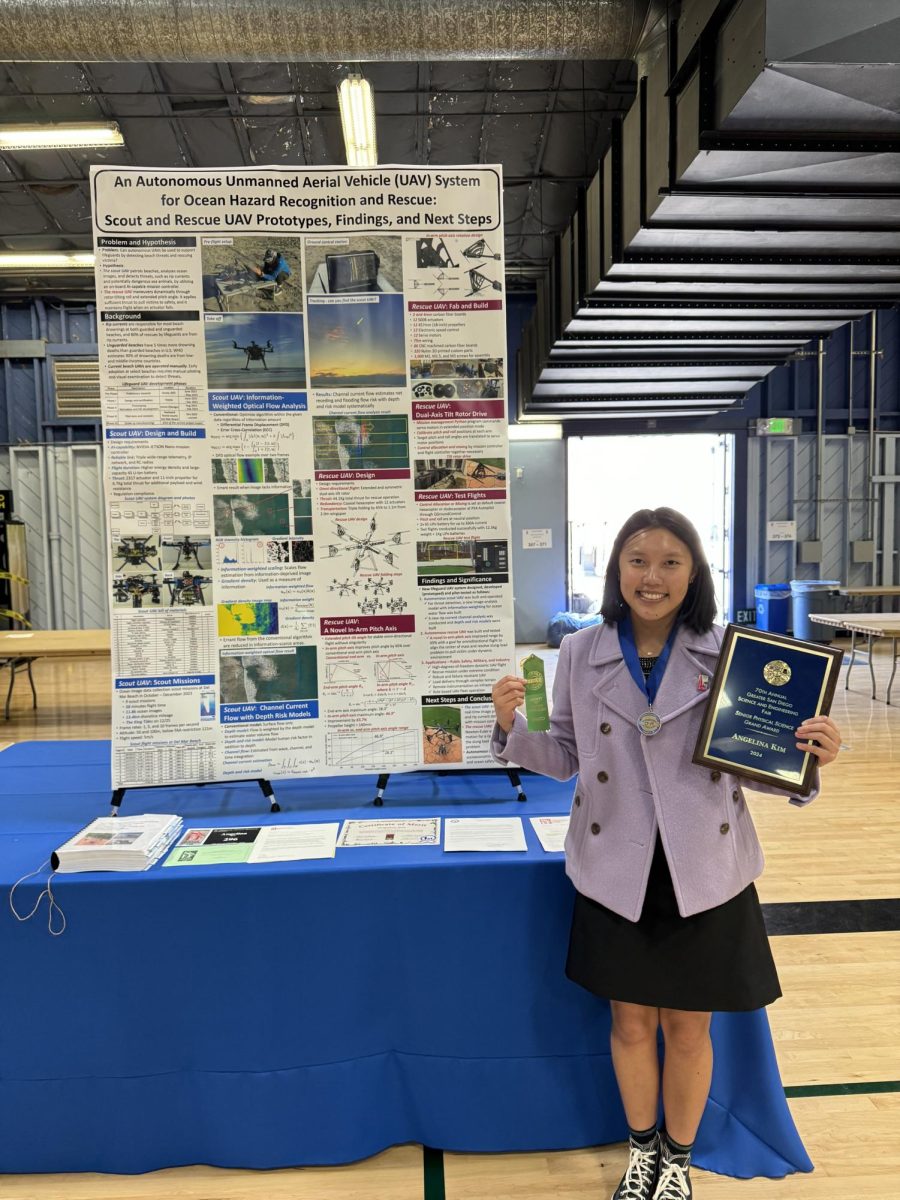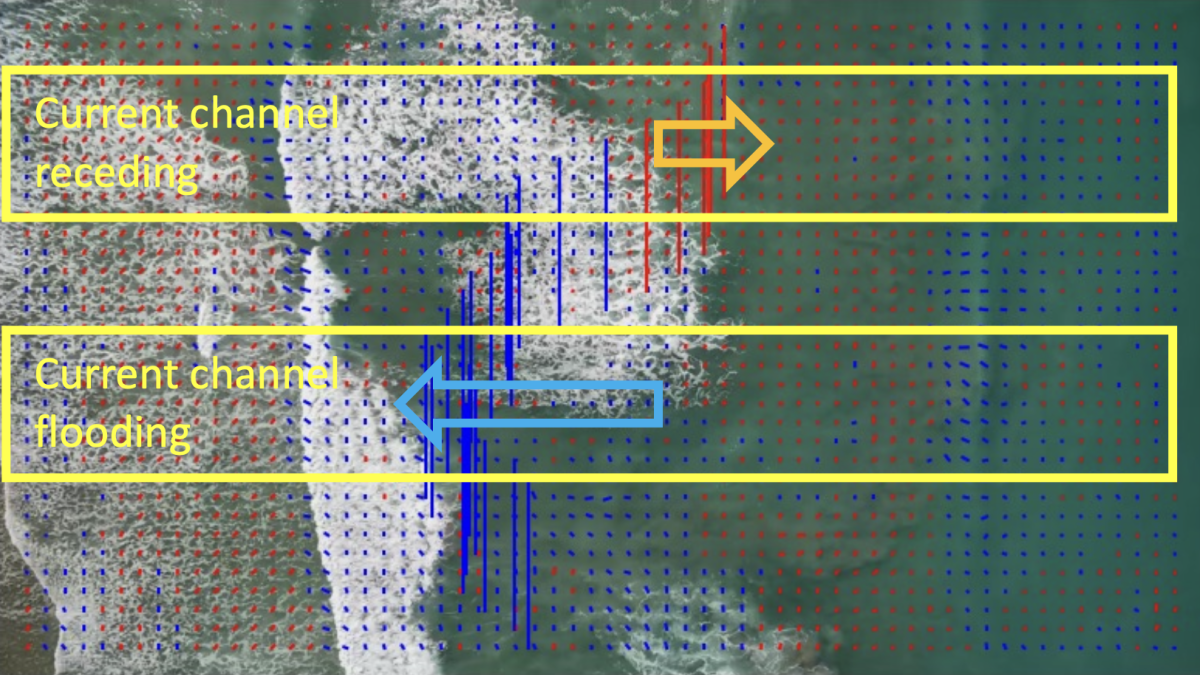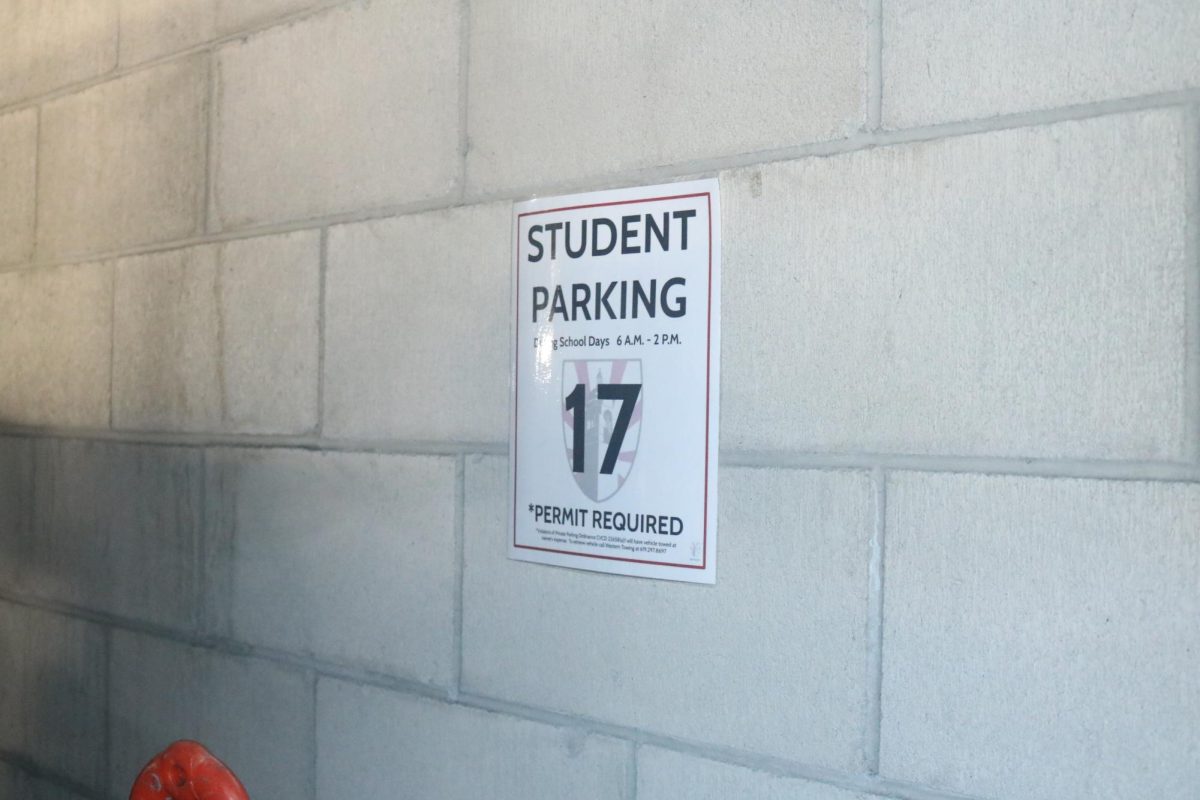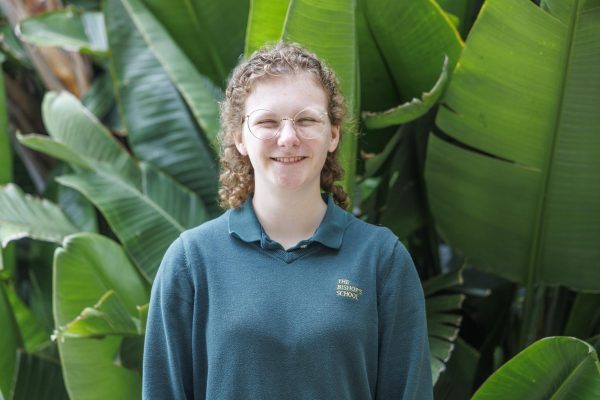In second grade, Angelina Kim (‘25) created a Scratch account, a language that allows people to program projects and share them with others. It didn’t take long for her to realize that she could play 2D Minecraft on the website. “Every day I would make these giant palaces of diamonds and farms with lots of chickens,” Angelina explained, “and I realized it’s really great to be able to use technology and programming for something fun.”
Scratch Minecraft was where Angelina’s love of science began, and it has done nothing but grow since then. That is why, at this year’s Greater San Diego Science & Engineering Fair (GSDSEF), she submitted her project for a “system that allows for rip current identification and then rescue of people caught in that rip current,” and won.
“It was really a whirlwind of emotions,” explained Angelina, who won one of the four Grand Awards at the fair, one of the two for Physical Sciences. “When they’re announcing the winners and runner-ups, typically you’re the only one in your group. So in the Engineering: Electrical, Mechanical, and Robotics group, I had hope that I could be nominated. But they announced the Grand Award Runner-Ups first, and they announced a kid from my group, so I was devastated! I was thinking ‘It’s over,’ and just hoping I could leave soon,” Angelina explained. “And then my friend points to the screen and I look up, and it’s my name!”
Angelina’s project, officially called “An Autonomous Unmanned Aerial Vehicle (UAV) System for Ocean Hazard Recognition and Rescue: Scout and Rescue UAV Prototypes, Findings, and Next Steps,” required months of hard work. She designed, built, and programmed drones that are able to detect rip currents, and people trapped in them, and pull them out to shore, a process that included “filling out all these legal forms saying you’re not going to kill anyone with your project,” she joked.
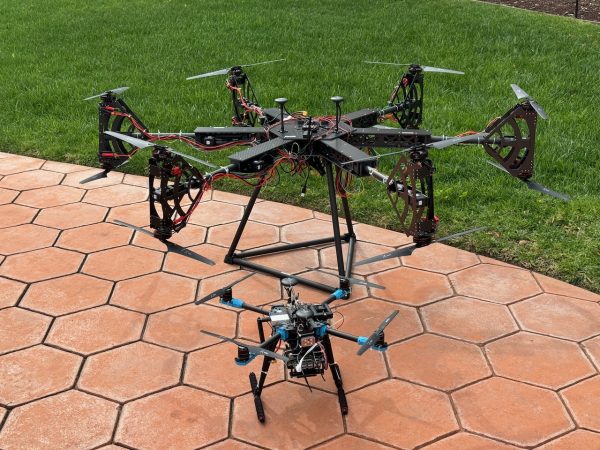
Of course, Angelina always set out to be extremely safe with her project; in fact, safety was one of the main things that motivated it, as she thinks “everyone should have the right to enjoy the beauty of the ocean safely.” Over the course of her research, Angelina learned how much of a threat drowning is in California, especially in unguarded beaches, which are typically found in underserved communities, and set out to prevent these injuries and deaths.
Angelina’s concern for safety started extremely young, she explained. “When I was two, my mother was diagnosed with stage four metastatic cancer, so I had a lot of concerns about safety growing up because I was always worried about my mother’s health. This led to my concern for the health of others, which is why I always carry Advil and bandaids in my bag, and why I ended up working on this project.” These efforts have not gone unnoticed — her advisor, Spanish Teacher Ms. Nicole Uhland, said that Angelina always “worries for people and wants to make sure everyone is OK,” and that “she is always positive and very in tune with how everyone is feeling.”
Her care for this project and goals she hopes to accomplish with it are apparent in how much time she has spent working on it, and how much effort — including getting a drone pilot certification and filing a patent (which she is “not sure how it’s gonna go but we’ll see in about a year”) — was required. This did not come as a shock to Sophia “Sopo” Guan (‘24), President of All Girls STEM Society. She said that Angelina, the Co-Vice President of the club, is valuable “beyond her positivity and bubbly personality,” and “she’s really organized and responsible — I can always count on her!”
Angelina said she began her project “right after last year’s science fair since I was deeply motivated by my failure… well, not my failure, but my aspirations to do better,” she joked. “Around March-ish, I began fully ideating this stuff: how will the system work together, how will the scout drone communicate with the rescue drone… my first idea was actually that the scout and rescue drone would be one drone, but then I realized that if you want an 11 kilogram drone flying around, you require an immense amount of power, and I did not have that!”
Her solution to this problem ended up being two different drones, which she nicknamed Cinderpelt and Cinderkit after the characters in the book series Warrior Cats: one small scout drone and one substantially bigger rescue drone. “What [the scout drone] does is patrol the ocean and take photos every 0.1 seconds, and utilize a special algorithm that I developed to identify the flow of ocean channels,” Angelina explained. “And once the scout drone sees a rip current and a person in it, it calls the rescue drone,” which she wasn’t able to bring to the science fair because of its size, “whose whole purpose is to drag a person out of a rip current and back to shore.”
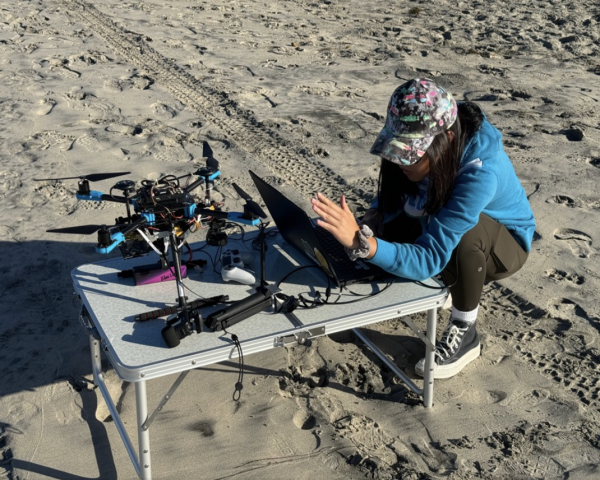
The actual construction of the scout drone occurred over the summer of 2023. “The frame was ordered online but I had to assemble everything else by buying random stuff off of Amazon and hoping that it fit.” This was also happening as she was beginning to work on the design of the rescue drone, which she “started building late last year and early this year, so I was hitting really close to the deadline… but it all worked out!”
By the time December of 2023 rolled around, Angelina had the scout drone completed but needed to begin taking image data of the ocean to identify rip currents. “I actually took over 11,800 images over the course of ten visits to the beach with the scout drone,” she explained. One of these visits even took place on Christmas morning. “One of the challenges was that rip currents would appear most often when I was at school so I didn’t have a lot of opportunities, so I seized those opportunities when I could and when I had time.”
But the photos couldn’t be used without an algorithm, which Angelina had to design. “There’s a lot of previous research on how to calculate rip currents, and one of those is called differential frame displacement — you compare a point in the previous frame to a point in the next frame to see where that point moves — except the issue is the photos I was taking were big, and it found a lot of rip currents that weren’t actually there. So I had to develop my own method of emphasizing the errant factors less.”
Risk assessment was also taken into account: “I also developed a depth risk model that said, ‘Okay algorithm, if you see a rip current in the shallow area, that’s not that bad. If you see a rip current in a deep area, that is bad.’” This is because, as Angelina explained, “if you’re in the shallow area, unless there’s a baby or a chihuahua involved, you’re gonna be fine, but if you’re in the deep end you might die.”
But for a project that emphasizes safety, there were also risks involved in its development… especially for palm trees living in Angelina’s backyard. “I had to ask my parents’ permission to fly the scout drone in the backyard, and they had to endure the pain of seeing the trees get hit because I didn’t realize they were in the way. It may have also hit our house at one point, but thankfully no windows died.”
Another request her parents had to fulfill was installing a CNC (Computer Numerical Control) machine in the garage — or, as Angelina calls it, “a 100 pound baby that cried every ten minutes because something was going wrong” — which she uses to cut out carbon fiber.
Now that Angelina has won a Grand Award at the GSDSEF, she qualifies for the Regeneron International Science and Engineering Fair. After that, she hopes to “figure out how to make the scout and rescue drones at a cheap cost and give them out to all the unguarded beaches, and especially underserved communities so safety is accessible to everyone.” She has already come one step closer by winning the California Science and Engineering Fair First Place award and the California Shore and Beach Preservation Association’s Senior Award for Best Coastal Science Project.
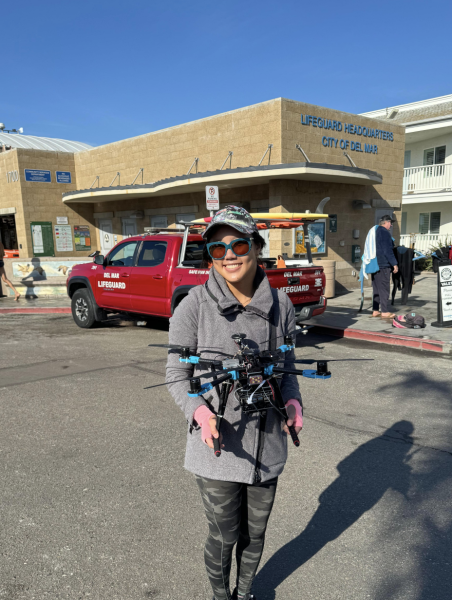
In the meantime, she is following the advice she lives by: “When life gives you lemons, make chocolate. And if you don’t have any cacao just make lemon chocolate.” She explained, “just go with the flow is what I’m trying to say, no matter how many times your drone crashes into palm trees or dogs chase after you or judgy judges say they don’t know what the heck you’re doing. You’ve just gotta make chocolate out of it, man.”


